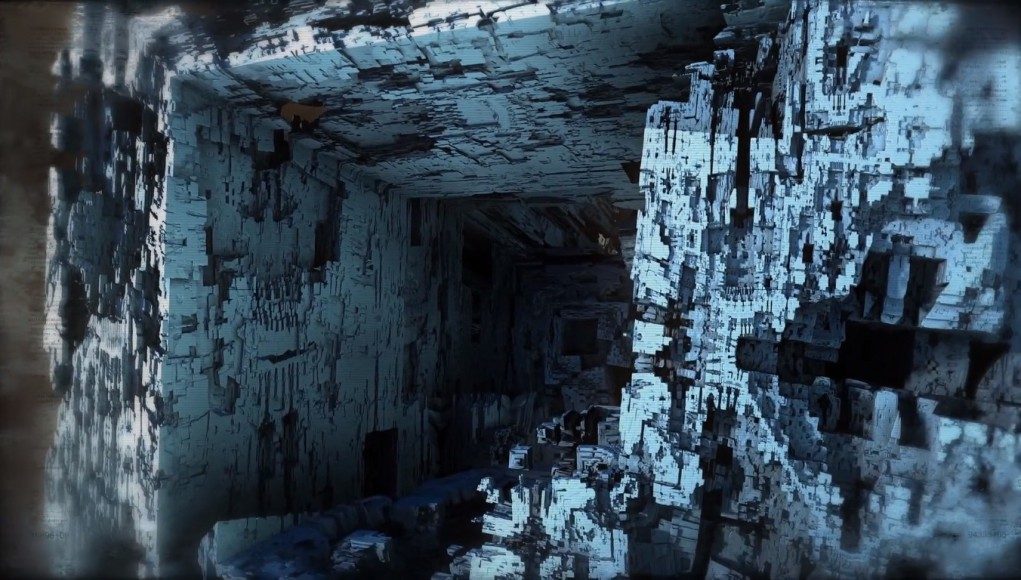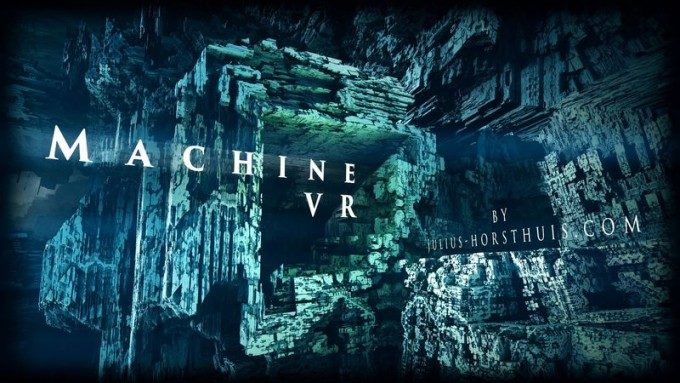Produced by Dutch visual effects artist Julius Horsthuis, Machine VR is the newest installment of a line of contemplative fractal 360 videos—this time taking you into an infinite world of crenelated metallic structures that is sure to ignite the imagination.
The human mind has a weird way of perceiving the world, like when you look at a cloud and see distinctive shapes, or when you look into the dark corner of your room and see an imposing figure where a pile of clothes used to be. The mind is grasping at connections by way of a psychological phenomenon called pareidolia—seeing patterns that aren’t really there.
 Horsthuis, a VFX supervisor at Hectic Electric in Amsterdam, conducts Machine VR to a backdrop of an ominous instrumental track that draws you in closer into the crystalline metallic structures, where you’ll see faces, mountains, continents, the inside of a Borg Cube ship—almost anything you can think of, you’ll see for a fleeting moment along your way. Clocking at 12 minutes,
Horsthuis, a VFX supervisor at Hectic Electric in Amsterdam, conducts Machine VR to a backdrop of an ominous instrumental track that draws you in closer into the crystalline metallic structures, where you’ll see faces, mountains, continents, the inside of a Borg Cube ship—almost anything you can think of, you’ll see for a fleeting moment along your way. Clocking at 12 minutes,
“Fractal fly-throughs can be boring,” writes Horsthuis. “[I] made this one extra long to make sure you would get super bored. That is unless you start to forget the world around you and let your imagination fill in the fractal void.”
Despite it’s name, Machine VR is much less architectural and machine-like than Horsthuis’ previous work, Foreign Nature, which we saw earlier this year. “The deeper you go, the more intense this place will feel,” continues Horsthuis. “You’ll be so immersed you won’t comprehend that this massive world exists almost entirely in your imagination – since the mathematical formula to create this world is so tiny we could text it to you.”
Horsthuis uses a specialized program called Mandelbulb 3D to make his fractal creations, he told The CGBros.
Usually I start by playing around with formulas, until I settle on a shape I like. Then I try different color palettes. Mandelbulb3D is set up in such a way that you can render a still (which can take a couple of minutes) and after that, you can change color schemes on the fly. Even lighting, fog color, and textures can all be changed without re-rendering. This makes it so that I can easily try a lot of different things to see what works. When I settle on a look, I start animating. Sometimes only a fly-through, but sometimes I like the fractal itself to morph. I set off the animation to the farm, and load up some frames in After Effects, where I play with the Z-buffer to diffuse the background, making it look foggy, or create depth of field, which makes it look small and microscopic. Sometimes I use a camera-tracker like syntheyes to add other 3d elements of use 3d compositing tools.
For everything I liked about Machine VR, I still find it slightly beyond my capacity to take on twisty turns. I was by no means nauseous, but flying up, around, down, and to the sides—even at a leisurely pace—can still play with your stomach a fair bit, so ‘VR sealegs’ are a must if you really want to properly “fill in the fractal void.”
If you don’t own a VR headset, you can view the experience on Littlstar, which allows you to pan around the 360 video with a mouse.
For DK2 owners we suggest using Whirligig VR player (working with Oculus 0.7 runtime) to view Machine VR. Gear VR owners may want to drop the 3.17 GB mp4 file into their Oculus 360video folder, but we’ve found that judder is a continual issue with 4K spherical video on mobile devices, even at the low-ish rate of 25 fps, so you’d be better off sticking with PC-driven headsets for the full experience. You can of course always downsample the video to something the mobile platform can digest, but you’ll most certainly lose out on some finer detail.
You can find more 360 fractal experiences on Horsthuis’ website like the ones seen in his 2015 show reel posted below.








